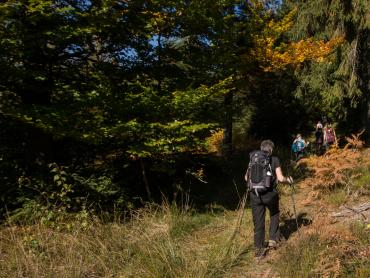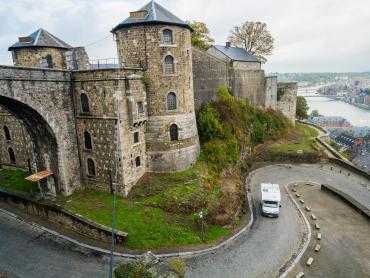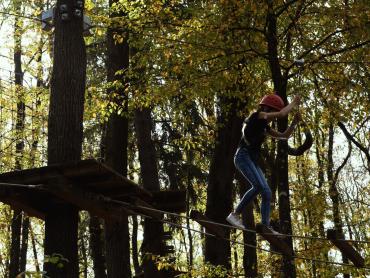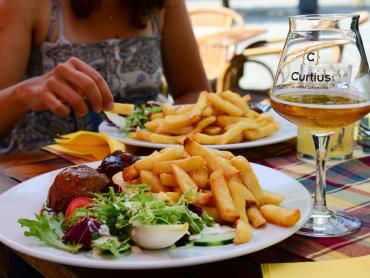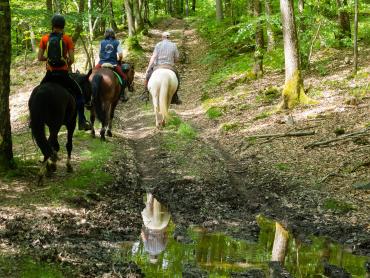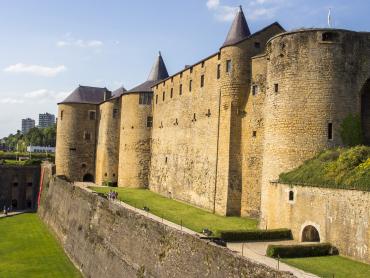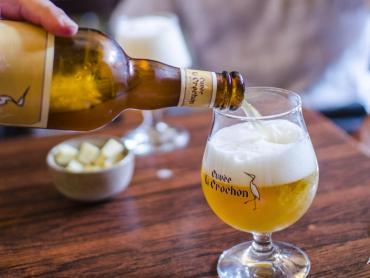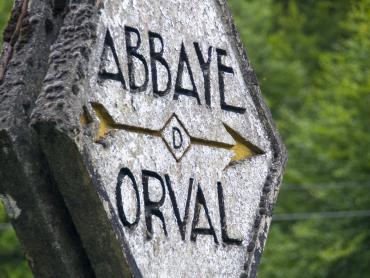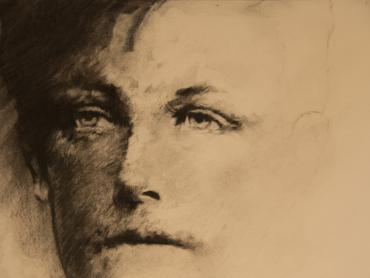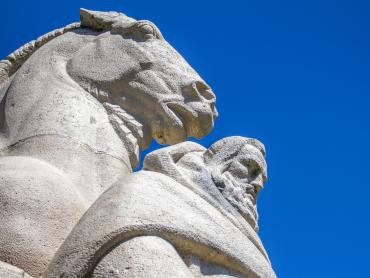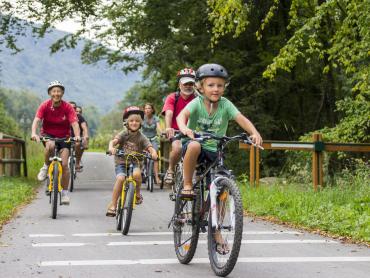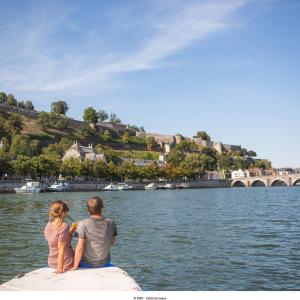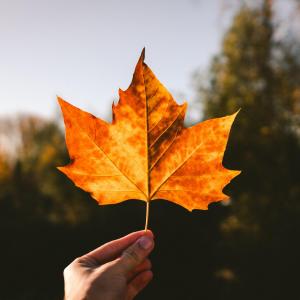Ardenne in the singular as the sum of the Ardennes in the plural... but why?
In the French-language singular, the name describes the geological ruin of the Hercynian massif of Ardenne whose long and complex history intertwines with that of the Eifel region split between Belgium and Germany. From this very ancient massif of eroded, plicate mountains buried by whole eras of marine sediment, emerges a patchwork of geological regions (and, with it, an exceptional variety of landscapes). While the Belgians are familiar with the name "Ardenne" in the singular, the French are more likely to use the plural form, as "Ardennes" is the name that was adopted by a decree passed by the brand new founding assemby of the French department on 26 February 1790. Given the geopolitical context, our destination is named "Ardenne" in the singular (in French). This singular term does indeed represent the sum of the plural versions since, in the eyes of many, the Belgian Ardennes cover the provinces of Liège, Namur and Luxembourg. In France, there are the French Ardennes, while in the Grand Duchy of Luxembourg, where Luxembourgish is spoken rather than French, the Ardennes part of the geological massif is called Éislek. So "Ardenne" in the singular really does represent the sum of these pluralist but very close regions. The Flemish, Dutch, Germans and English, on the other hand, always refer to this region in the plural: Ardennen or Ardennes.
One forEST BUT THREE COUNTRIES!
The Ardennes region and its components, which also include the areas of Argonne, Famenne and Condroz, stretches into three countries: Belgium, France and the Grand Duchy of Luxembourg. The omnipresent forest covers an area 40 times the size of Paris, including a total surface of 440,000 ha in the Belgian Ardennes (over 90% of Wallonia's forest) and 153,000 ha in the French Ardennes alone (29% of the department). This is nature with a capital N, a reserve of natural assets and riches, a green lung and a reservoir that seems to beckon you into this wilderness.
HOW LONG DOES IT TAKE TO EXPLORE THE green & H2o ASPECTS OF THE ARDENNE(S)?
The Ardenne and its Ardennes are full of places to explore. This land of hardworking men is dominated by nature and woodland and encircled by "glade" towns, most of which stand at the water's edge. After all, the Ardennes region is also an archipelago of rivers and streams. The majestic Meuse is probably the most famous of these waterways, accompanying day-to-day its "daughters" including Namur, Dinant, Givet, Andenne, Liège, Huy, Visé, Sedan and Charleville-Mézières. The Ardennes are ideal for day excursions and weekend breaks, as well as longer stays, as demonstrated by the "globes bloggers" who spent 3 weeks exploring between the 3 countries of the Ardennes. An experience waiting to be tried, on our website. Just click here.
EACH TO THEIR OWN ArdenneS? WHO ARE OUR ARDENNES ambassadOrs?
Our Ardennes ambassadors are people who love this region and want to tell you about it! They can be sports fans like Maxime Monfort, video makers like Martin Dellicour, publishers like Olivier Weyrich, local inhabitants, or simply visitors to the Ardennes. Our ambassadors each boast their own special version of the Ardennes and each have their own way of promoting it.
SPRING, SUMMER, autUmn & WINTER? WHAT SHOULD I PACK FOR MY four seasonS TRIP TO THE ARDENNES?
Boots? Shorts? A warm jacket? It all depends on what activities you intend to do. But whatever the season, this is nature, so bring good walking shoes! We recommend you consult the "weather and seasons" section of our website to find out what to expect at different times of year in the Ardennes. The forest and nature have so many different facets!
WHAT LANGUAGES ARE SPOKEN IN THE ArdenneS?
In the Belgian and French parts of the Ardennes, people speak French. Sometimes you can still hear Walloon in its dialects from Namur, Liège, Picardy or Lorraine. On the Belgian side, Dutch is taught in schools and it's not unusual for visitors from Flanders or the Netherlands to find a local capable of replying to their questions in their own language. In the Grand Duchy of Luxembourg, French and German are generally spoken but the national language is Luxembourgish (Lëtzebuergesch in Luxembourgish). This Germanic language spoken mainly in the Grand Duchy of Luxembourg can also be heard in some of the bordering localities in Belgium, France or Germany.
